The archipelago of Japan is host to in excess of two hundred thousand native festivals which take place each year.
For an entire week, in the month of February, the capital city of Sapporo hosts a winter snow festival in the region of Hokkaido.
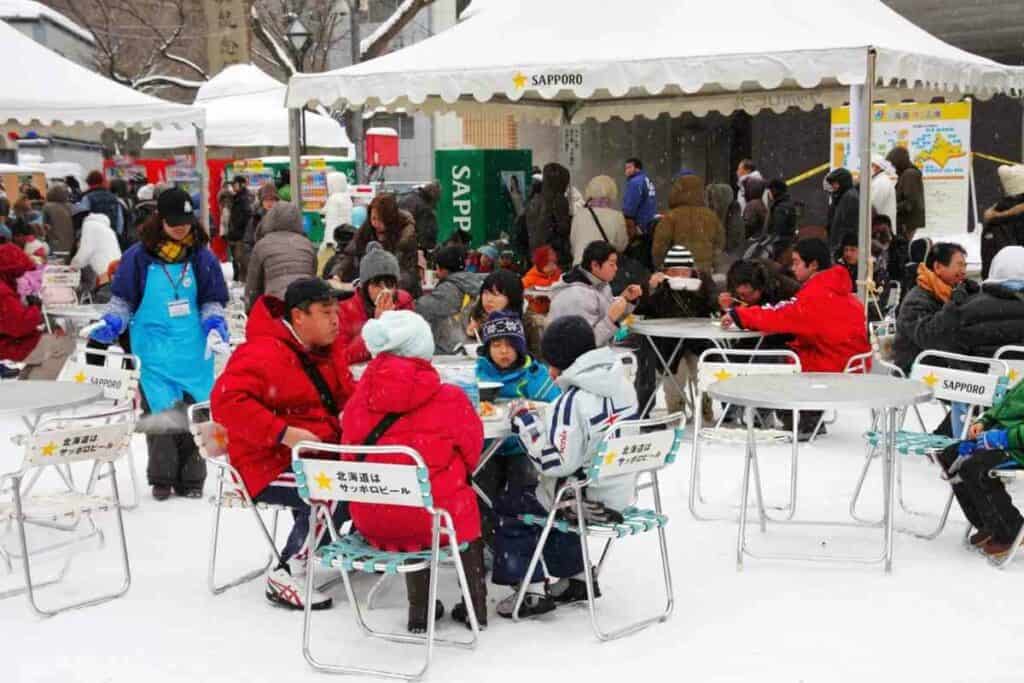
Brimming with fun and exciting activities, this festival attracts sometimes millions of visitors each year, from both inside and outside of Japan.
Famous for monumental snow sculptures, this festival is one you won’t want to miss!
What to Expect? This article will overview the Sapporo Snow festival, its main activities and attractions, and some of the of the history behind this globally famous event.
Table of Contents
What is the history behind Sapporo Snow Festival?
Beginning in 1950, the Sapporo Snow Festival’s roots lie with a group of students who decided to go out, one day, and create a total of six snow sculptures in the heart of Hokkaido: Sapporo city’s Odori Park.
Initially, this attracted a mixture of around fifty thousand tourists and locals to the area, who came to view the spectacle.
This even then gave rise to the annual festival which is now internationally renowned.
Just five years later, members of the Japanese Armed Forces got in on the action and crafted the first humungous snow sculptures, wowing visitors.
From 1955 onwards, the festival has grown in popularity and continues to create jaw-dropping displays for visitors year on year.
Read later – 10 Best Destinations for Snow in Japan
International Snow Statue Competition
Just prior to 1960, thousands of people were taking part in the festival and creating new and inventive sculptures.
In the 1970s, it was internationally reported on within the media and the International Snow Statue Competition was born.
This further increased the festival’s status and popularity grew to an international level.
Now there are in excess of 200 sculptures, across three sites, each year and more than one competition.
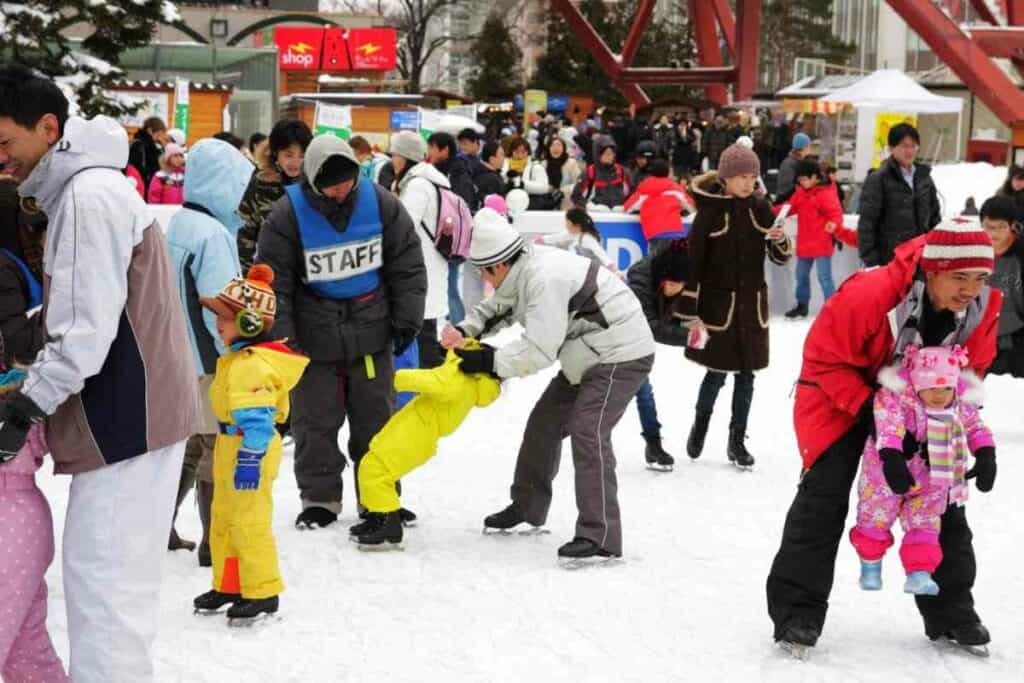
What is the main attraction at Sapporo Snow Festival?
There are many things which attract visitors at this festival, but none are such a spectacle as the snow sculptures themselves.
Ranging is size from just a few feet high to some as tall as buildings.
Sculptures featured are usually famously recognisable Disney and Anime characters, displays from Star Wars, Wonders of the World, famous buildings, traditional Japanese dragons, and many more.
At Night – They are lit up in magnificent, multicoloured, neon displays and are a literal wonder to behold. Best not forget your camera!
What else is there to do at Sapporo Snow Festival?
Though Odori park is the main site, there are other areas surrounding the park which are all worth a visit.
Though many have been closed over the years, three officially recognised sites exist today.
Makomania Base
After Odiri park, the base was named an official festival site in the mid-1960s.
Thanks to military resources, the largest and most spectacular snow sculptures featured at the base but other sites now give their historical works a run for their money.
Makomanai Park is also a place worth visiting. Stage for the opening ceremony of the 1972 Winter Olympics, the park is home to an open stadium seating over ten thousand people.
There is also the Ice Arena situated within the park itself, where you can go ice skating.
No longer a site for the festival, since 2005, it still might be a place worth a visit should you stay in the area.
Susukino
Added as an official festival site in 1983, the success of the site inspired an extension of the festival from just a few days to a whole week long.
Susukino hosts both an opening and closing ceremony, as well as a contest and photoshoots.
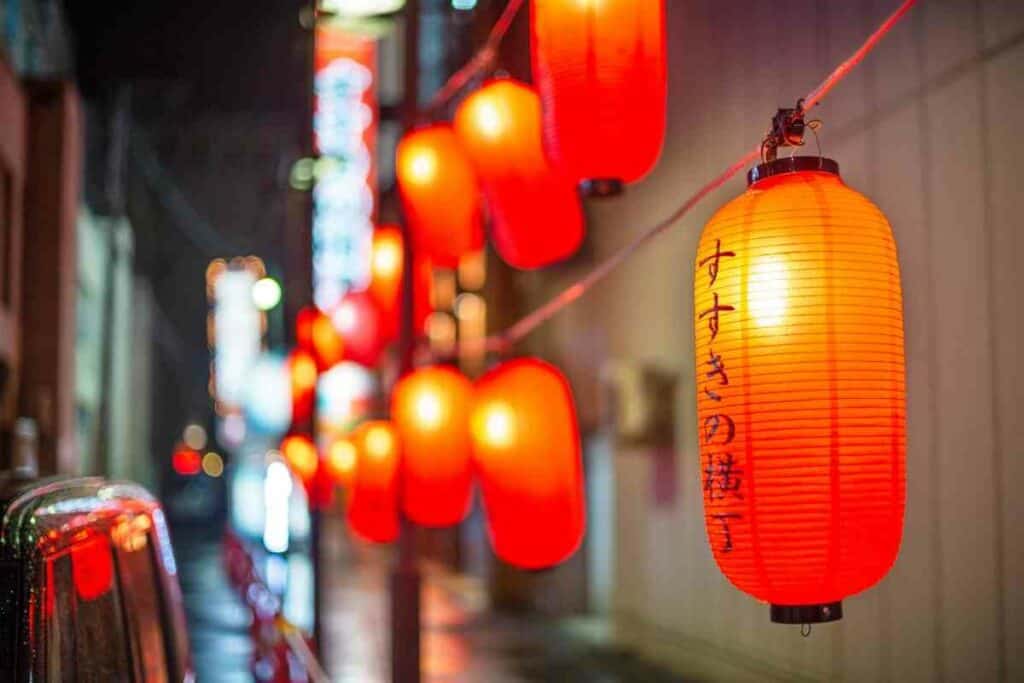
In addition to being one of Japan’s most famous red light districts, Susukino offers an array of intricately carved ice sculptures during the snow festival.
As with snow sculptures, but often on a smaller scale, take part in the scenes, touch, climb, and have your photograph taken.
These works of art are also lit up with a spectrum of coloured neon lights, until late at night.
Just a single subway stop from Odiri park, it is easy to get to and brimming with entertainment venues, bars, restaurants and is a fantastic place to spend some of your visit, especially if you like the nightlife.
What We Suggest? Visit the famous Ice Bar on Illumination Road where you’ll meet the Ice Queen and be able to pose for a picture or two.
Tsudome
Created to replace another site known as ‘Sato-Land’, a temporary festival site which closed in 2008, Tsudome is now one of the three official sites of the festival.
This is a much more family-oriented area and is located just outside the city. It is in fact built, in part, from snow and some sculpted areas can even be climbed.
Activities take part on and around sculpted areas, with both in and outdoor events to take part in.
From 9-5, throughout the festival, this action-packed site is full of fun activities for all the family. Because of its popularity, it is kept open longer the festival itself and is often accessible for an additional week.
Enjoy various snow-based activities such as:
- sledding
- tobogganing
- magnificent snow slides
- tunnel slides
- and snow rafting
- they even organise snowball fights!
With a shuttle bus trafficking tourists from site-to-site, it’s one that you simply can’t miss, particularly if you have young children with you.
Odiri Park
Now the main site of the festival, this park is already a beautiful place to visit but was just once a city dumping ground for snow.
Currently consisting of almost a hundred variations of tree, this island of country at the center of a business hub in Sapporo city, is simply a street.
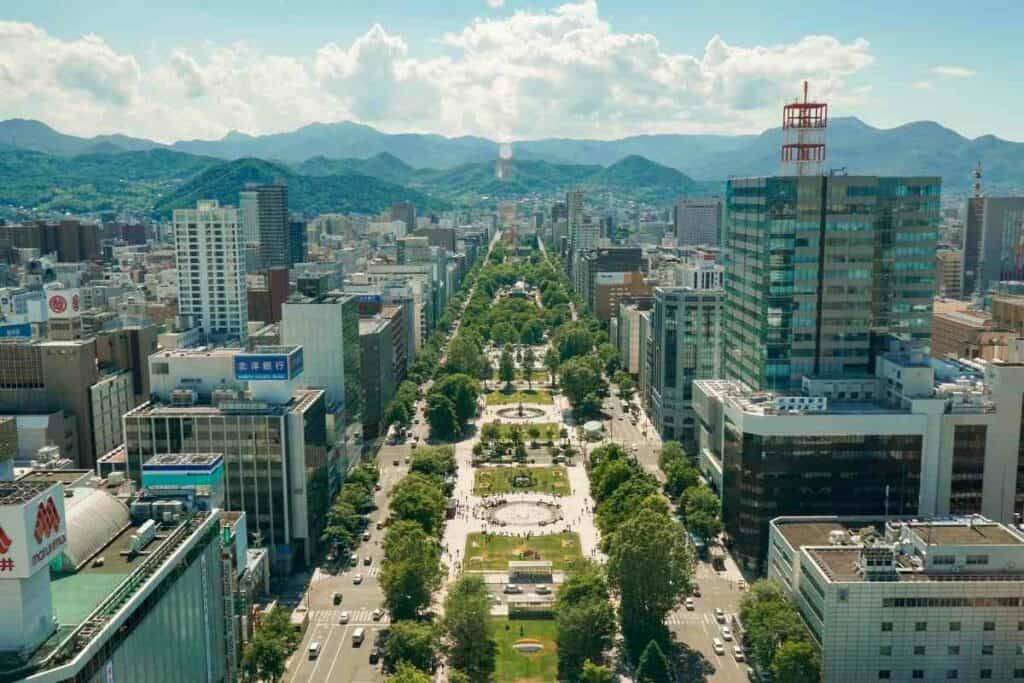
Separating the city by both North and South, the park is situated on a large, central city street (‘Odiri’: ‘large street’) and is around a mile in length.
Originally a break in construction for fire purposes created in 1871, this popular attraction is visited frequently, regardless of the festival.
Throughout the Summer, people often visit for a picnic or to walk the dog and get some fresh air; an oasis of nature within the humdrum of city life.
During the Festival – However, the park becomes packed to the rafters with people from all over Japan and the rest of the world.
Extravagantly impressive snow sculptures captivate visitors and serve as backdrops for millions of selfies.
Along with famously inspired masterpieces, you will also find various kinds of ice sculpture to marvel at.
Additionally, the park is home to a number of outdoor food stalls and hosts live entertainment, not just during the snow festival.
You may also like ?
A Fairy Tale Festival
In 1978, during the 29th annual snow festival, the theme of all future festivals was established: ‘The World’s Open Stage of Pure White Dreams’.
Emblematic of the international participation, the reference to ‘pure white dreams’ inspired all kinds of fairy tale-themed sculptures, from Disney movie scenes to monumental snow castles and mythical dragons.
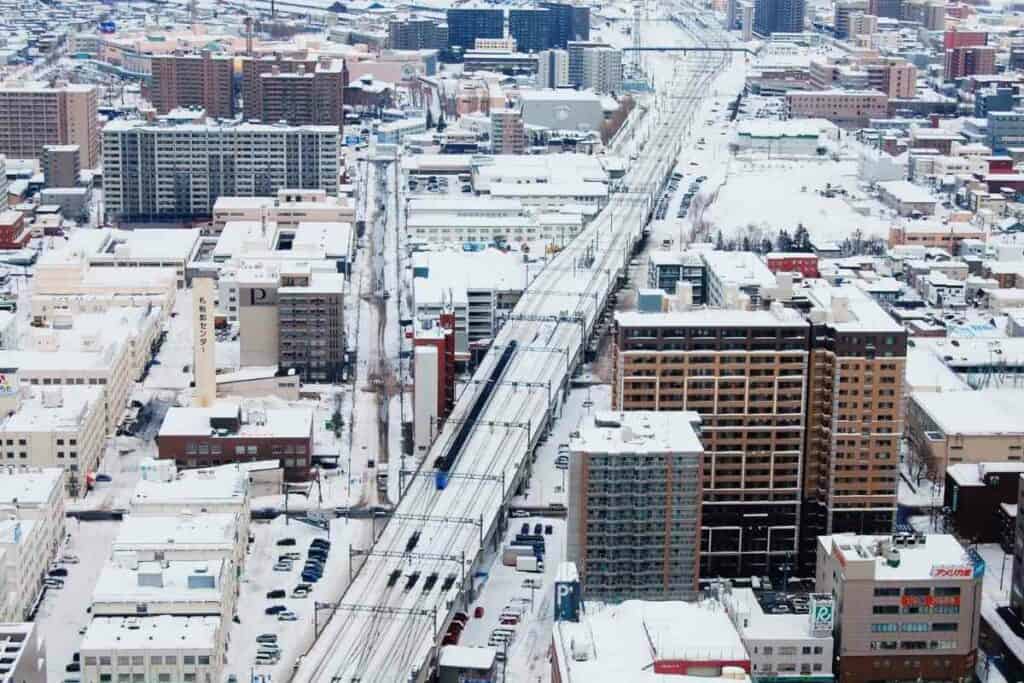
With the newer Tsudome site being aimed mostly at children, this is truly a Winter Wonderland which will capture your imagination and is arguably a once in a lifetime trip to take.
Also Read ?
Final Thoughts
As with numerous Japanese festivals, visiting Sapporo during the snow festival can be both expensive and difficult if left too late.
Booking in advance is the only way to secure accommodation in the heart of events because the festival is so massively popular.
It is, however, very much worth the effort, particularly for movie fans.
A feast for your eyes, this festival is one of the few places on Earth where you can have your picture taken with Darth Vader and next to the Great Pyramid of Giza, on the same day.
Irresistible for people of all ages, the Sapporo snow festival has something for everyone.
Whether you visit one, or all three official sites, you’re sure to be both dazzled and amazed.
In Case You Missed It
- 12 Things Tourists Should NEVER Say in Japan
- Kissing Robot: Exploring the Popularity of the Chinese Kissing App
- Unlocking the Secret Dating Rituals Only Locals Know in Japan
- Samurai Armor: Ancient Protection for Japan’s Elite Warriors
- 10 Amazing Facts About Schools in Japan: Unique Traditions and Educational Practices
- Where can you see snow monkeys in Japan: Best locations and viewing tips









